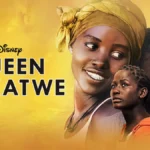Hip-hop, born from the vibrant streets of New York City in the late 1970s, has evolved into a global cultural phenomenon that transcends boundaries of race, geography, and language. What began as a form of expression for marginalized communities has since permeated mainstream culture, influencing music, fashion, art, and social activism worldwide. In this article, we’ll explore the rich history and evolution of hip-hop, tracing its journey from its humble beginnings to its current status as a dominant force in popular culture.
The Birth of Hip-Hop:
The roots of hip-hop can be traced back to the South Bronx, where DJs, MCs, graffiti artists, and dancers came together to create a new form of artistic expression. Block parties and park jams served as the epicenters of this burgeoning culture, with DJs such as Kool Herc, Afrika Bambaataa, and Grandmaster Flash pioneering the use of turntables and breakbeats to create rhythmic soundscapes that inspired dancers and MCs alike.
The Four Elements of Hip-Hop:
Hip-hop culture is built on four fundamental elements: MCing (rapping), DJing (turntablism), graffiti art, and b-boying/b-girling (breakdancing). These elements serve as pillars of the culture, each contributing to the vibrant tapestry of expression and creativity that defines hip-hop.
The Golden Age of Hip-Hop:
The late 1980s and early 1990s are often referred to as the “Golden Age” of hip-hop, marked by an explosion of creativity and innovation in the genre. Artists such as Run-D.M.C., Public Enemy, A Tribe Called Quest, and N.W.A. emerged during this period, pushing the boundaries of lyricism, storytelling, and social commentary in their music.
Hip-Hop Goes Mainstream:
By the mid-1990s, hip-hop had firmly established itself as a dominant force in mainstream music and culture. The success of artists such as Tupac Shakur, The Notorious B.I.G., and Jay-Z propelled hip-hop to new heights of commercial success and cultural relevance. Hip-hop’s influence extended beyond music, shaping fashion trends, slang, and attitudes towards race, identity, and social justice.
The Globalization of Hip-Hop:
As the internet revolutionized the way music is consumed and distributed, hip-hop’s reach expanded exponentially, transcending geographical boundaries and cultural barriers. Artists from around the world began to embrace hip-hop as a means of expressing their own experiences, blending traditional sounds and languages with the genre’s signature beats and rhymes.
Hip-Hop as a Platform for Social Activism:
Throughout its evolution, hip-hop has served as a powerful platform for social activism and political commentary, giving voice to marginalized communities and addressing issues such as racism, poverty, police brutality, and systemic injustice. Artists such as Kendrick Lamar, J. Cole, and Cardi B have used their platforms to spark conversations, raise awareness, and advocate for change through their music and activism.
The Future of Hip-Hop:
As hip-hop continues to evolve and adapt to changing cultural landscapes, its future remains bright and full of possibilities. Emerging artists are pushing boundaries, experimenting with new sounds and styles, and challenging conventions to keep the genre fresh and relevant for generations to come. With its roots firmly planted in the streets and its influence felt around the world, hip-hop shows no signs of slowing down as it continues to shape and define the cultural landscape of the 21st century.
The evolution of hip-hop from its humble beginnings in the streets of New York City to its current status as a global cultural phenomenon is a testament to its power and resilience. As hip-hop continues to evolve and adapt, its influence on music, fashion, art, and social activism remains unparalleled, making it one of the most influential and enduring cultural movements of our time.











